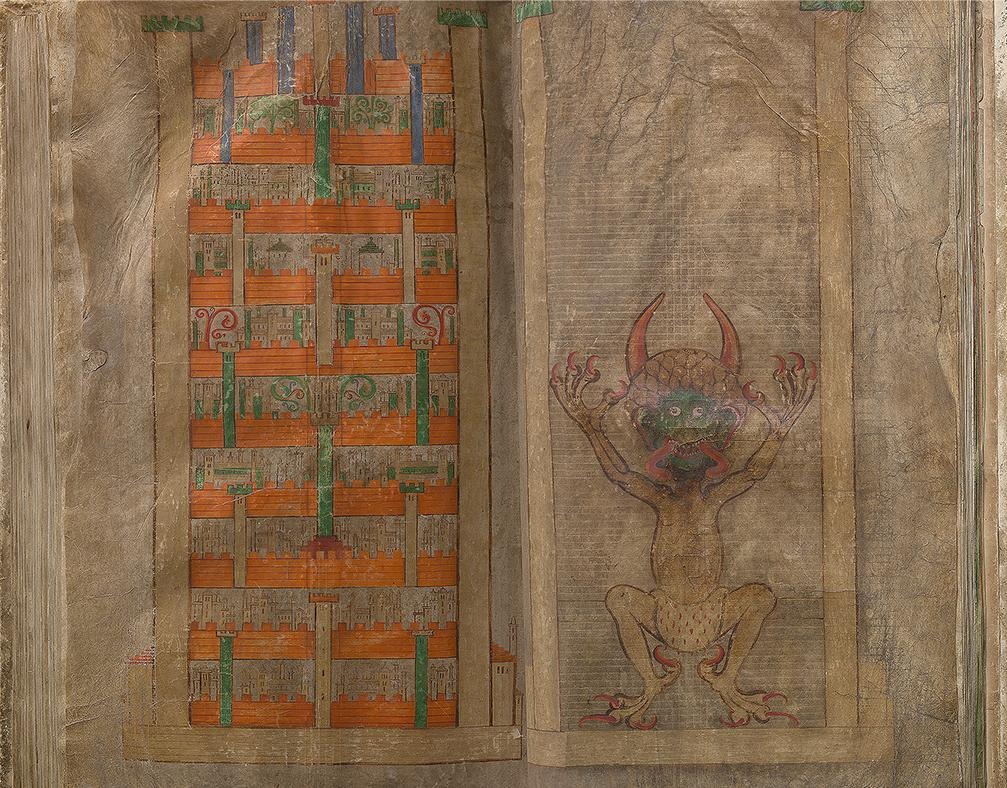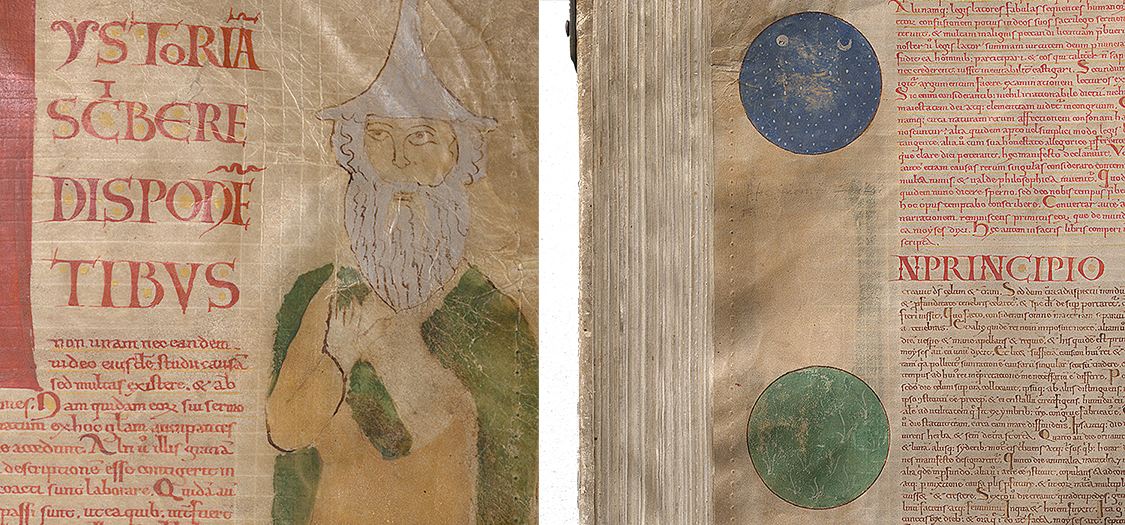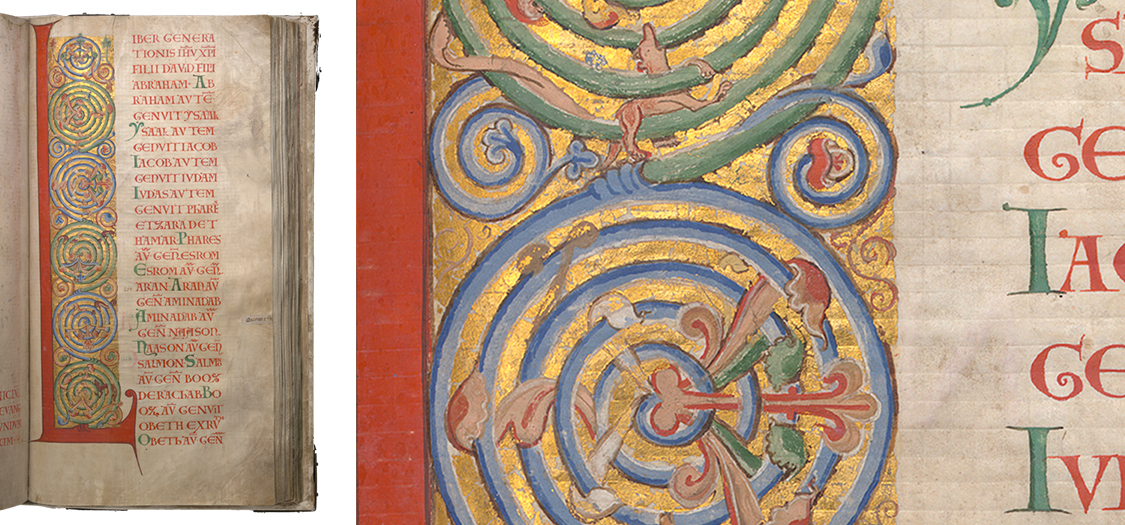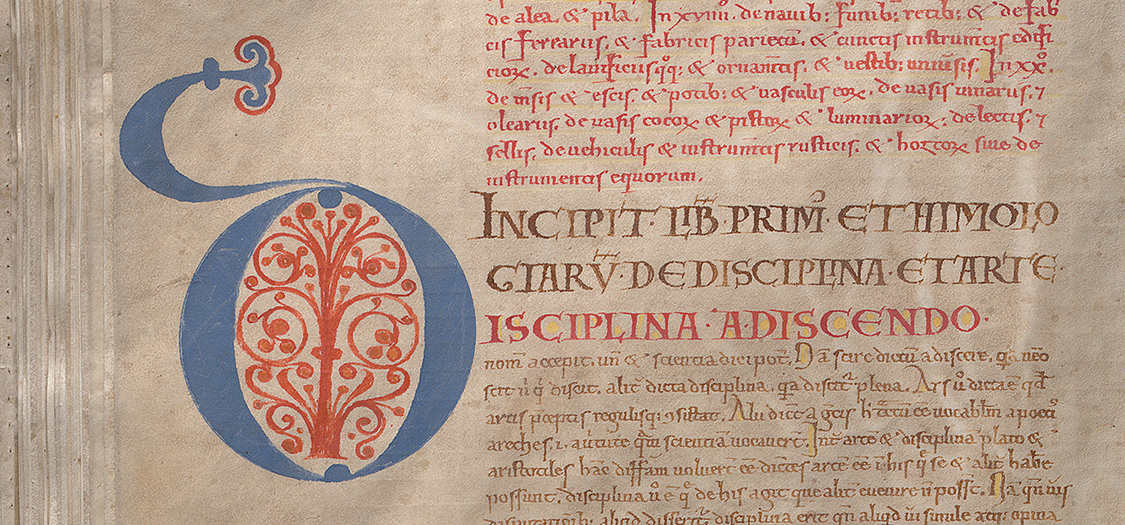Ornamentation in the Codex Gigas
The artistic ornamentation of the Devil’s Bible consists of five pictures – three in the margins and two that fill an entire page – and 77 colourful initials.

Jerusalem and the Devil
The two full-page pictures on a spread towards the end of the book show Heavenly Jerusalem and the portrait of the Devil. The positioning of the pictures highlights the difference between the symbol of hope and salvation on the one hand, and that of darkness and evil on the other.
Author portrait, heaven and earth
The three marginal pictures are found in Antiquities of the Jews, written by Josephus Flavius. The first is a portrait of the author placed next to the prologue of the work. The others consist of two orbs found right at the beginning. These pictures represent heaven and earth and illustrate the beginning of the Creation story. These are the only pictures found throughout the Codex Gigas with a link to the text.

Josephus to the left and heaven and earth to the right.
Brilliantly coloured initials
The Codex Gigas is packed with ornate initials. They appear at the beginning of main texts and in the main sections of the texts. The most ornate initials, which have several colours, appear at the beginning of most of the books of the Bible. One appears at the beginning of the Chronicle of Cosmas of Prague. The initials are decorated with spirals that end in stylised leaves and flowers.
Full-page initials
Six of the initials run the height of an entire page. Their decoration also includes birds and various animals. Two are found in the Old Testament, with the remaining four found in the New Testament, where they appear at the beginning of the Gospels. The initial letters of the Gospels According to Saint Matthew and Saint Mark are the only ones in which gold was used.

The “L” initial that marks the beginning of the Gospel According to Saint Matthew.
Simpler initials
The Codex Gigas also has less ornate initials. One type is referred to as “arabesque initials”. These feature two colours, with letters in blue and leaf ornamentation in red. They are found at the start of each book in Isidorus of Seville's encyclopedia, and at the top of each page of the calendar and necrology.
The second type is referred to as “fleuronné initials”, with letters appearing in one colour and flower decorations in another.

Two-coloured arabesque initial that leads off a paragraph in Isidore’s Etymologiae.
